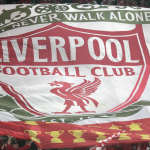ONE of the streets in the immediate vicinity of Selhurst Park is called Bungalow Road, named for the sort of building that has only one floor. And that seems apt, because if Crystal Palace have one flaw at the moment then it is their home form, and with chalk escarpment rivals Brighton & Hove Albion heading up and over the south and north downs on Saturday, the stakes are higher than ever.
So far this season Palace’s only wins at home have been a quick pair against struggling-at-the-time Burnley and a Claude Puel-era Leicester in early December and one of the final losses of Claudio Ranieri’s disastrous tenure at Fulham in February. Contrast that with the club’s productivity on the road: four wins from their last six, including a sensational 3-2 victory at Manchester City. The only defeat in that spell was at Anfield in a 4-3 game that could have gone either way; once again, Palace’s away form is keeping them in the game.
‘Once again’ because this is not a new phenomenon in the slightest. In fact, of the six campaigns with the highest proportion of points won away from home in the Premier League era, Crystal Palace are responsible for three of them. Top of the pile is 1997-98 when Palace didn’t win at home until April (GPS-pedants may like to note that they won ‘away’ at Selhurst Park against Wimbledon in September) but picked up three points at places such as Goodison Park, White Hart Lane and St James’ Park. Even so, they finished bottom with 33 points, a total likely to be well out of reach for Huddersfield and Fulham this season and possibly even enough to stay up in the stretched modernity of 2019.
Other than this season, the other Palace campaign to make the top six is 2014-15, when the Eagles prepared for the season with Tony Pulis, spent the first half of it being guided by Neil Warnock and the second half under Alan Pardew. Despite all the turmoil at home, Palace ended the season in 10th place with seven away wins, more than fourth-placed Manchester United, and six wins from their last eight on the road, including a 3-1 spoiler victory at Anfield in Steven Gerrard’s last appearance there.
One of Palace’s scorers in that win at Liverpool was Wilfried Zaha, and he remains a key reason why the club are still reliant on their away form. 60% of Zaha’s Premier League goals have come away from home, exactly the same proportion as Riyad Mahrez, who scored the bulk of his for Leicester in their counter-attacking pomp. There’s no correct way to set up in the Premier League but if you are a team with Palace’s DNA then being more productive on the road isn’t a huge surprise. Opta’s new sequences model shows that only Liverpool and Wolves have had more direct attacks (moves that start in a team’s own half, have at least 50% movement towards the opposition goal and end in a shot or touch in the box) than Palace this season. Roy Hodgson may wish he could tweak Palace’s approach and accumulate more points at Selhurst Park but fiddling with the operating system can lead to the loss of the very thing that made you effective, as Leicester have found in the last 18 months.
|
PL 2018-19 |
Direct Attacks |
|
Liverpool |
70 |
|
Wolverhampton Wanderers |
64 |
|
Crystal Palace |
63 |
Even so, Palace face a Brighton team who have lost 10 of their 14 Premier League away games this season and have won only one of their last nine trips to the other end of the A23. Iconic Premier League moments at Selhurst Park include Eric Cantona’s leap into infamy and Liverpool’s Crystanbul surrender in 2014. It’s surely time for the Eagles to create some raw imagery of their own and hand Brighton an era-defining beating.




